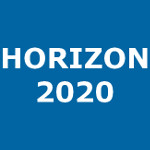A novel charging station on overhead power lines for autonomous unmanned drones
Muñoz-Gómez, A.M. ; Marredo-Píriz, J.M. ; Ballestín-Fuertes, J. ; Sanz-Osorio, J.F. (Universidad de Zaragoza)
Resumen: Innovative drone-based technologies provide novel techniques to guarantee the safety and quality of power supply and to perform these tasks more efficiently. Electric multirotor drones, which are at the forefront of technology, face significant flight time limitations due to battery capacity and weight constraints that limit their autonomous operation. This paper presents a novel drone charging station that harvests energy from the magnetic field present in power lines to charge the drone’s battery. This approach relies on a charging station that is easy to install by the drone on an overhead AC power line without modifying the electrical infrastructure. This paper analyses the inductive coupling between the energy harvester and the power line, electrical protection, the power electronics required for maximum power point tracking and the mechanical design of the charging station. A drone that perches on a cable, an end effector for installation procedures and the charging maneuver are described, along with discussion of the robotic and electrical tests performed in a relevant environment. Finally, a lightweight drone charging station capable of harvesting 145 W of power from a 600 A line current is reported.
Idioma: Inglés
DOI: 10.3390/app131810175
Año: 2023
Publicado en: Applied Sciences (Switzerland) 13, 18 (2023), 10175 [17 pp.]
ISSN: 2076-3417
Factor impacto JCR: 2.5 (2023)
Categ. JCR: ENGINEERING, MULTIDISCIPLINARY rank: 44 / 181 = 0.243 (2023) - Q1 - T1
Categ. JCR: PHYSICS, APPLIED rank: 87 / 179 = 0.486 (2023) - Q2 - T2
Categ. JCR: CHEMISTRY, MULTIDISCIPLINARY rank: 115 / 231 = 0.498 (2023) - Q2 - T2
Categ. JCR: MATERIALS SCIENCE, MULTIDISCIPLINARY rank: 258 / 439 = 0.588 (2023) - Q3 - T2
Factor impacto CITESCORE: 5.3 - Engineering (all) (Q1) - Computer Science Applications (Q2) - Materials Science (all) (Q2) - Fluid Flow and Transfer Processes (Q2) - Instrumentation (Q2) - Process Chemistry and Technology (Q3)
Factor impacto SCIMAGO: 0.508 - Engineering (miscellaneous) (Q2) - Fluid Flow and Transfer Processes (Q2) - Materials Science (miscellaneous) (Q2) - Instrumentation (Q2) - Process Chemistry and Technology (Q3) - Computer Science Applications (Q3)
Financiación: info:eu-repo/grantAgreement/EC/H2020/871479/EU/AERIAL COgnitive integrated multi-task Robotic system with Extended operation range and safety/AERIAL-CORE
Tipo y forma: Artículo (Versión definitiva)
Área (Departamento): Área Ingeniería Eléctrica (Dpto. Ingeniería Eléctrica)
 Debe reconocer adecuadamente la autoría, proporcionar un enlace a la licencia e indicar si se han realizado cambios. Puede hacerlo de cualquier manera razonable, pero no de una manera que sugiera que tiene el apoyo del licenciador o lo recibe por el uso que hace.
Debe reconocer adecuadamente la autoría, proporcionar un enlace a la licencia e indicar si se han realizado cambios. Puede hacerlo de cualquier manera razonable, pero no de una manera que sugiera que tiene el apoyo del licenciador o lo recibe por el uso que hace.
Exportado de SIDERAL (2024-11-22-12:03:15)
Visitas y descargas
Idioma: Inglés
DOI: 10.3390/app131810175
Año: 2023
Publicado en: Applied Sciences (Switzerland) 13, 18 (2023), 10175 [17 pp.]
ISSN: 2076-3417
Factor impacto JCR: 2.5 (2023)
Categ. JCR: ENGINEERING, MULTIDISCIPLINARY rank: 44 / 181 = 0.243 (2023) - Q1 - T1
Categ. JCR: PHYSICS, APPLIED rank: 87 / 179 = 0.486 (2023) - Q2 - T2
Categ. JCR: CHEMISTRY, MULTIDISCIPLINARY rank: 115 / 231 = 0.498 (2023) - Q2 - T2
Categ. JCR: MATERIALS SCIENCE, MULTIDISCIPLINARY rank: 258 / 439 = 0.588 (2023) - Q3 - T2
Factor impacto CITESCORE: 5.3 - Engineering (all) (Q1) - Computer Science Applications (Q2) - Materials Science (all) (Q2) - Fluid Flow and Transfer Processes (Q2) - Instrumentation (Q2) - Process Chemistry and Technology (Q3)
Factor impacto SCIMAGO: 0.508 - Engineering (miscellaneous) (Q2) - Fluid Flow and Transfer Processes (Q2) - Materials Science (miscellaneous) (Q2) - Instrumentation (Q2) - Process Chemistry and Technology (Q3) - Computer Science Applications (Q3)
Financiación: info:eu-repo/grantAgreement/EC/H2020/871479/EU/AERIAL COgnitive integrated multi-task Robotic system with Extended operation range and safety/AERIAL-CORE
Tipo y forma: Artículo (Versión definitiva)
Área (Departamento): Área Ingeniería Eléctrica (Dpto. Ingeniería Eléctrica)
Exportado de SIDERAL (2024-11-22-12:03:15)
Enlace permanente:
Visitas y descargas
Este artículo se encuentra en las siguientes colecciones:
Artículos > Artículos por área > Ingeniería Eléctrica
Registro creado el 2023-10-06, última modificación el 2024-11-25
